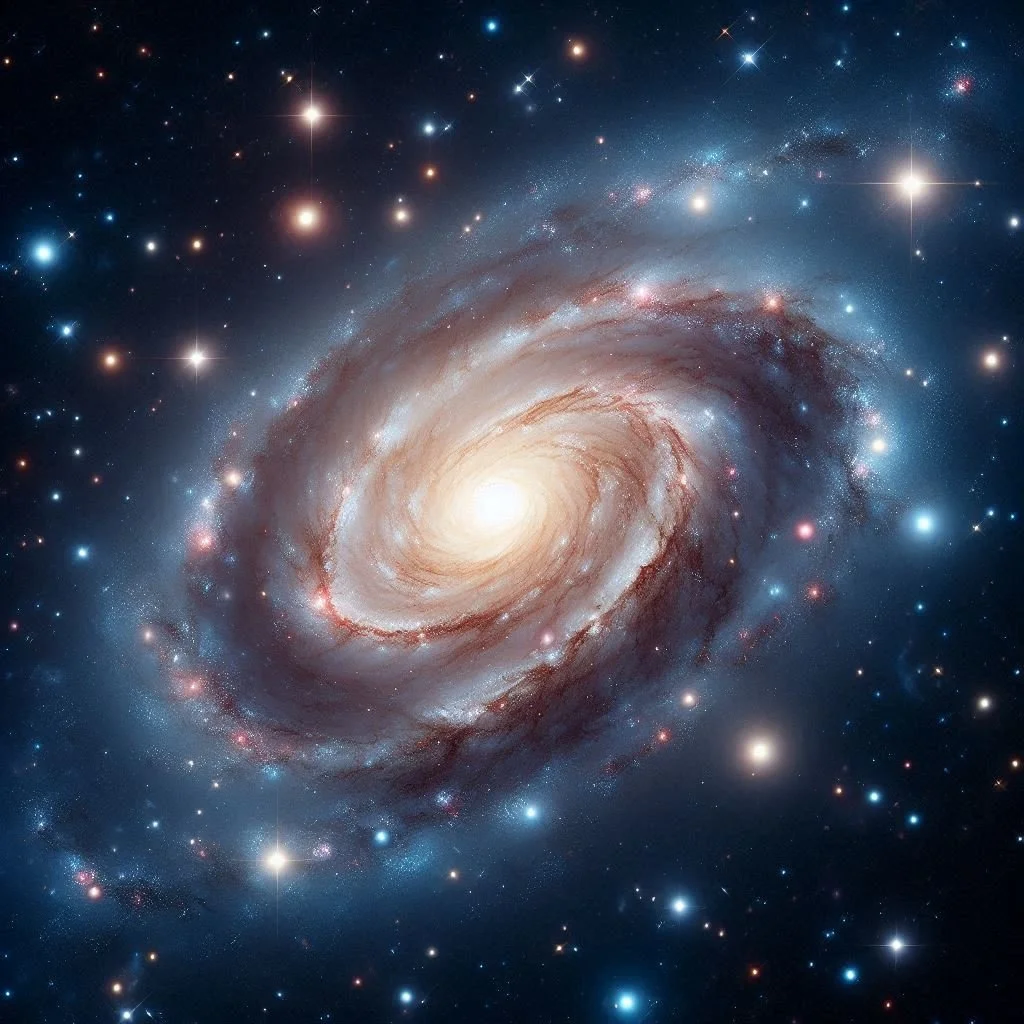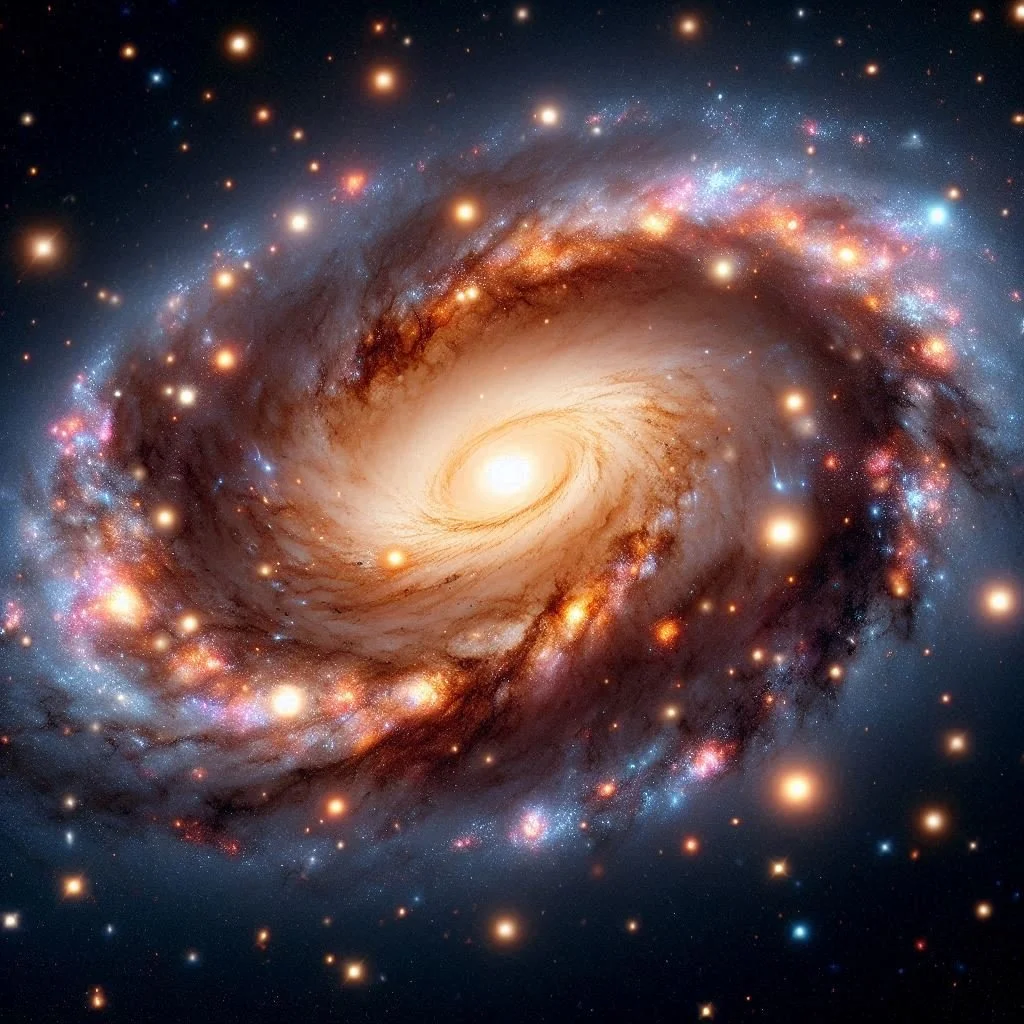
Decoding Galactic History: How the Milky Way’s Disk Thickness Tells the Tale of Cosmic Collisions
The study reveals the Milky Way’s merger history through its disk thickness, using stellar age data and simulations. Key events include the Gaia-Sausage-Enceladus merger 11 billion years ago and interactions with the Sagittarius dwarf galaxy. Simulations confirm these patterns, showing a transition from a thick to thin disk over billions of years. Despite uncertainties, the findings provide a robust method to trace galactic evolution.

Exploring the History of the Milky Way with Gaia’s Giant Stars
The study uses Gaia data and machine learning models to estimate the ages of giant stars, revealing insights into the Milky Way's evolution. By analyzing over 2.2 million stars, the researchers identified three major phases in the galaxy's history, including a starburst triggered by a major merger and the formation of the thin disc. Their method advances our ability to trace the Milky Way's structure and development.

Exploring Black Holes in Dwarf Galaxies: Insights from Omega Centauri
This study by Limberg explores the proposed intermediate-mass black hole (IMBH) in Omega Centauri (ωCen), a stripped nuclear star cluster thought to be from the dwarf galaxy Gaia-Sausage/Enceladus. It extends known relationships between black hole mass, stellar mass, and velocity dispersion to dwarf galaxies, suggesting such galaxies follow similar evolutionary patterns as larger systems. The findings emphasize the importance of studying IMBHs to understand black hole formation and their role in galaxy evolution.

Unveiling the Milky Way’s Past: Insights from Dwarf Galaxies and Simulations
The study by François Hammer and collaborators examines the Milky Way's accretion history by comparing observational data, including globular clusters and dwarf galaxies, to predictions from cosmological simulations. They find that older mergers align well with simulations, but most dwarf galaxies appear to have been captured relatively recently, contradicting simulation predictions. The study highlights mismatches in rotation curves and binding energy distributions, suggesting current models need refinement. The work concludes that more realistic simulations are required to accurately capture the Milky Way's mass distribution and evolutionary history.

Investigating the Milky Way’s Thin Disk Evolution Through Solar Twins
The study by Anastasiia Plotnikova investigates the chemical evolution of the Milky Way’s thin disk by analyzing solar twins—stars similar to the Sun. Using high-resolution spectroscopy, the team examined the age-metallicity relationship (AMR) and found no evidence for a split into distinct populations, challenging previous studies. They suggest that radial migration and galaxy mergers, like the Gaia-Enceladus/Sausage event, significantly shape the disk’s chemical composition, indicating a more continuous, smooth evolution of the thin disk than previously thought.

Exploring the Milky Way's Proto-Galaxy: A Chemical and Structural Investigation Using APOGEE-Gaia
This study by Horta and Schiavon uses data from the APOGEE and Gaia surveys to investigate the Milky Way's proto-galaxy—its earliest stellar components. By analyzing the chemical compositions and distribution of ancient stars, the authors identify distinct populations, including those from the galaxy's main progenitor and from past mergers like Gaia-Sausage-Enceladus. Using a Plummer model, they estimate the mass of the proto-galaxy to be about 9.1 x 10^8 solar masses, providing insights into the early formation of the Milky Way and its structural evolution.

Star Formation History of Gaia-Sausage-Enceladus: What Elemental Abundances Reveal
The study by Ernandes et al. investigates the star formation history of the Gaia-Sausage-Enceladus (GSE) galaxy using elemental abundances from its stars. The results show that GSE's star formation began gradually and extended for over 2 billion years. However, it ended abruptly, likely due to its merger with the Milky Way. Comparing GSE's chemical patterns to dwarf galaxies like Sculptor and Fornax reveals that GSE's history was similar to Fornax's slow growth but was cut short by external forces.
